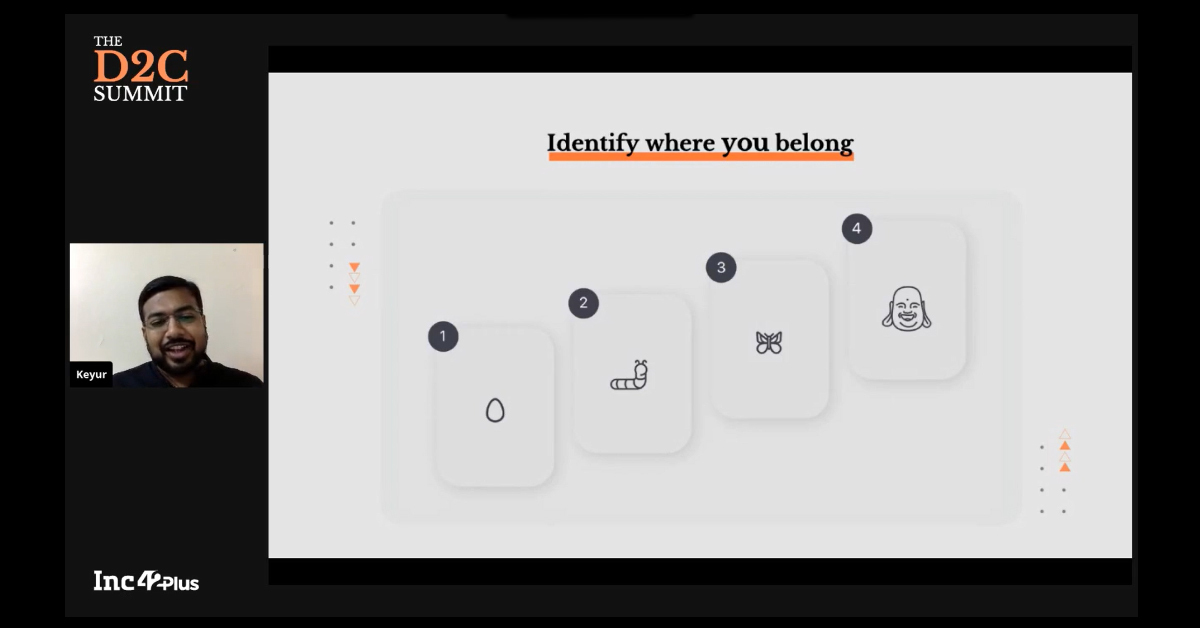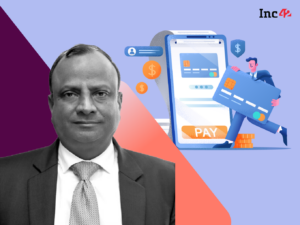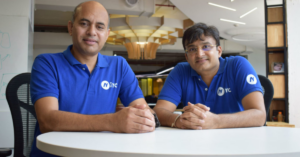As feedback loops come with data clutter and analytics tools require a steep learning curve, D2C brands often find it difficult to ensure better marketing and enhanced customer engagement
In his masterclass at Inc42’s recently concluded D2C summit, Keyur Dhami, VP, Customer Success, at WebEngage, explained the four levels of customer engagement and how to move up the scale
Dhami said that the right analytics tool and digital marketing strategy suitable for a brand’s digital maturity level would remove growth blocks like cart abandonment and low repeat purchases
“Who is a loyal customer?” asked Keyur Dhami, VP (customer success) at WebEngage, a Mumbai-based SaaS startup specialising in customer engagement. The question, simple and succinct, was the first step to capturing a greater context as Dhami kicked off his masterclass How To Solve The Conversion And Retention Puzzle For Your D2C Product. He hosted the session at Inc42’s recently concluded D2C Summit, 2021, helping brands understand different phases of customer engagement and their outcomes.
As most experts point out, customer engagement and customer experience (CX) go hand in hand and lead to retention and revenue growth. But even before forming a strategy to ensure customer satisfaction and build customer loyalty, it is essential for companies to understand what customers want and familiarise themselves with customers’ mindsets.
The problem is trickier than it seems at first. While brands have access to multiple channels for interaction with customers and several in-house/third-party tools for tracking website and social media data (often considered as feedback loops), a big data tsunami does not help with actionable insights. Companies, especially digital-first D2C (direct-to-consumer) brands, need to make sense of the clutter with the help of the right metrics and data analytics teams if they want to scale quickly.
Quoting best-selling author and customer loyalty expert Chip Bell, Dhami expanded upon his initial question and said, “Loyal customers don’t just come back; they don’t simply recommend you. They insist that their friends do business with you.”
In other words, finding the right ways to connect and communicate with customers is the key to building a deep retention funnel.
Check out the intriguing session below or read on for a snapshot of this exploratory martech masterclass
Four Levels Of Customer Engagement: Find Out Where You Are
Before exploring the tips, tricks and strategies to implement better ways to engage with customers, a brand must zoom out and identify where it stands in terms of marketing capabilities and customer engagement processes. A self-assessment is critical as it helps one track the gaps, implement the solutions and move to the next level.
According to Dhami, businesses have four levels of customer engagement. He named these levels for easy understanding, and we will take you through the egg stage (level 1), the caterpillar stage (level 2), the butterfly stage (level 3) and the nirvana stage (level 4).

The Egg Stage: 0-3 Years
These D2C businesses are either offline brands transitioning to online or new entrants looking for a product-market fit. They usually have small (digital) marketing teams, less agile processes and use email and SMS as the primary mode of customer engagement.
Although the adoption of martech is low at this point, these businesses can improve cart abandonment rates by engaging through email, SMS and interactive messages on drop-off/top exit pages on websites.
Adding a simple exit-intent message by offering additional discount/s on selected product/s or asking potential customers to fill a survey can help D2C brands increase conversions and find out the reason for the drop-off so that it can be rectified.
The Caterpillar Stage: 2-5 Years
At this stage, a brand has a fair understanding of digital marketing and an in-house marketing team in place. The customer acquisition cost (CAC) incurred is moderate as brands leverage content and affiliate marketing.
On the analytics side, these businesses show better efficiency at aggregating user information such as device used, geographic location and customer type (unique or repeat). These data points enable D2C brands to develop more personalised engagement strategies and adopt a multichannel approach to reach customers.
The Transition From Egg To Caterpillar

“When a D2C brand moves from the first to the second stage of maturity, understanding user behaviour becomes key to engaging with them more efficiently. Any user data, from gender and age group to location and more, can be leveraged to build better communication and improve retention and conversion,” said Dhami.
To begin with, businesses can use low-end technology like newsletter sign-ups to turn anonymous visitors into familiar faces. But there is more to accomplish.
Typically, brands use content marketing to talk about their products. However, a better way of engagement is to talk about product-related use cases and how the product can bring value to customers. This adds another layer to the customer acquisition funnel, capturing more leads and enabling content experimentation to track what drives the highest conversion.
Brands can also generate a simple Urchin Tracking Module, or UTM, to understand the source of the traffic and the overall effectiveness of their business campaigns.
When a brand gets comfortable with these initial measures, it can opt for several advanced methods like tracking funnel data. Funnel metrics relate to user behaviour, right from when a visitor enters a website/app to making a purchase or leaving, including drop-off points, average time taken for a purchase, pages on which most time is spent and more.
Another method is A/B testing for different ad banners, homepage layouts and notifications to determine better designs to boost conversion and retention.
The Butterfly Stage: 3-7 Years
A brand usually takes 3-7 years to reach the third level of digital maturity, also known as the butterfly stage. This is when a business sees the first flush of effective customer engagement. Companies in this stage usually have a comprehensive marketing automation system in place and experience lower CAC due to referrals and word-of-mouth promotion.
Brands in the butterfly stage mostly integrate an omnichannel approach and build a personalised web/app experience based on in-depth data aggregation and analysis. This is also a good time to venture into influencer marketing and push for brand visibility at every available opportunity.
Dhami suggested that a third-level brand should focus on price-drop campaigns. In this way, it can unload the old inventory, boost conversions to minimise cart abandonment and enhance customer delight in a price-conscious market like India.
Finally, The Nirvana Stage
This is the stage every business intends to reach eventually. There is no time marker available to help us understand how long a company may take to reach this phase. Some companies may take a couple of years to attain this kind of maturity, while others may take up to a decade.
A business that has attained ‘nirvana’ may leverage in-house martech solutions executed by a team of experts who make sure that marketing, engagement and analytics work in synergy. Or it may seek the help of marketing automation platforms that bring speed and efficiency to marketing campaigns, pulling new users deeper into the conversion funnel and turning first-time customers into loyalists.
A D2C brand should also witness higher customer lifetime value (CLT/CLTV indicates the total revenue a business can expect from a customer for the entire span of business relationship, again predicted by the metric). This leads to better business growth in terms of revenue (as CAC has already been incurred, the longer a customer’s lifespan, the better the CLT), increasing customer loyalty and less churn. Companies may also witness a rising number of repeat purchases due to personalised experience.
Catch all the insights and knowledge shared at The D2C Summit 2021 — right from what Dhami conveyed at his masterclass to learning from sessions that hosted popular brands like FirstCry, Lenskart, boAt and more. You will find it all at The D2C Academy.










